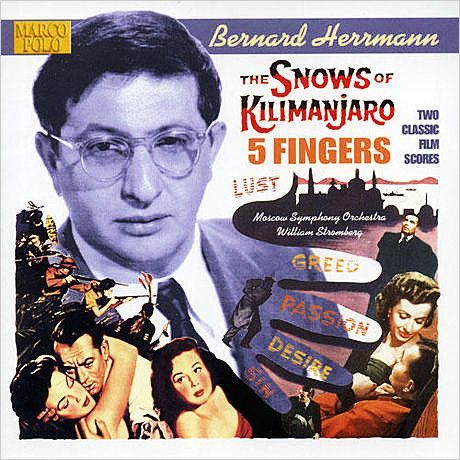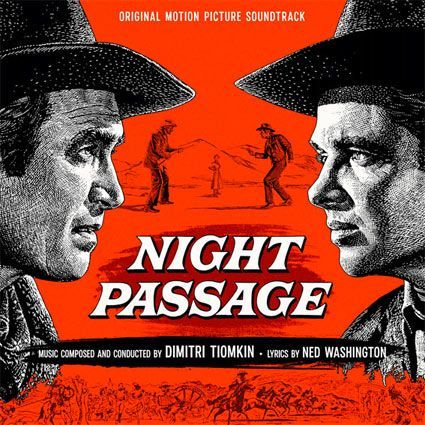The Snows of Kilimanjaro

Label: Marco Polo
Catalogue No: 8.225168
Release Date: 2001
Total Duration: 66:24
UPN: 6-3694-35168-2-9
The Moscow Symphony Orchestra conducted by William Stromberg
The welcome outpouring of previously unrecorded 20th Century-Fox scores continues with a new Stromberg/Morgan release, THE SNOWS OF KILIMANJARO and FIVE FINGERS, two lesser-known Herrmann scores from 1952. The screenplay for SNOWS is a series of flashbacks, and more a Technicolor fantasia on Hemingway themes than a valid adaptation of the author’s original short story of the title. Herrmann’s score is best known for the delicate “Memory Waltz,” but as a whole poignantly evokes themes of love, longing, and death in a manner akin to VERTIGO. A key cue is “The Death-Watch,” constructed almost entirely on a repetitive figure in low flute, and a motif that recurs fleetingly throughout the score. Two love themes, for the Ava Gardner and Susan Hayward characters respectively, and brief moments of hysteria (“Panic”, “The Witch Doctor”) flesh out the score, which is often quite haunting. There is some unique Herrmann here, including a swirling “Prelude” and very brief “Awakening,” but one wishes the composer had been given a bit more screen-time to develop his lyrical material. William Stromberg and the Moscow Symphony capture the vivid but elusive Herrmann sound effectively, though not always with the luminous intensity of Herrmann’s Hollywood originals, nor is the celebrated “Memory Waltz” as ethereal as one might like (and also commences with some questionable intonation from the violin soloist).
FIVE FINGERS is a spy drama with, as the notes put it, “the exoticism of Turkey and the perilous unstable emotionalism of film noir.” The Muscovites seem at their best with bold material – their KING KONG IS excellent – and FIVE FINGERS is considerably less subtle emotionally than SNOWS, with only a few lyrical cues (“Dreams,” “Romance,” “The Departure.”). Much time is also given over to Herrmann’s suspense mode, which, while working wonderfully in such films, treads a thin line between hypnotic and tedious on a complete recording. “The Film” makes interesting use of string tremolo, and “Cicero” is unusual for its almost jazzy muted brass. Several cues, the powerful “Prelude” and “The Old Street,” also exhibit Herrmann’s exotic flare, and suggest a kind of Hitchcockian / SINBAD hybrid. Two energetic tracks, “The Pursuit” (referred to as “Scherzo” in the notes) and “The Boat,” plus a brief (and incongruous) Latin cue,”Rio,” conclude the score before the obligatory ‘50s big-sound “Finale.”
Ross Care – Originally published in Soundtrack Magazine Vol. 20 / No. 80 / 2001



